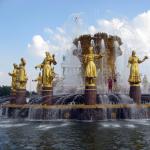Freezing the funded part of the pension - what does this mean for citizens. Returning frozen funded pensions to the pension system is impossible Returning the funded part of pensions to pensioners
ALL PHOTOS
"Prime" with reference to Russian Finance Minister Anton Siluanov.“There are no sources for returning the money. No one was going to return this money, because this money went to Crimea, to take anti-crisis measures,” the minister said and added that the rest of the pension money will go to support the program for the socio-economic development of Crimea and Sevastopol.
“Simply saying that we will return this money is an uncalculated proposal that has not been discussed... We must ask the author how this will be done,” the minister said. He stressed that freezing savings in 2015 “is not even being discussed.”
Siluanov's statement was a reaction to the proposal of the Russian Minister of Economic Development Alexei Ulyukaev. In an interview with the Vedomosti newspaper published on June 25, he called for the return of 243 billion rubles funded pensions, selected from NPFs, those that will undergo corporatization and inspection by the Central Bank. Ulyukaev also proposed to “taboo” any talk about further freezing of funded pensions.
Let us recall that last fall, at the proposal of Deputy Prime Minister Olga Golodets, it was decided to freeze citizens’ pension savings for 2014. The money was directed not to non-state pension funds, but to current payments to pensioners.
The state promised citizens to compensate for the loss of savings contributions by increasing the number of points in the insurance part of the pension and 7% indexation in 2015. Thanks to this maneuver, the Ministry of Finance reduced transfers from the budget to the pension fund by a comparable amount. The resulting savings made it possible to increase the reserve provided for in the budget in case of a worsening economic situation by 3.5 times - from 100 to 343 billion rubles.
Initially, these funds were not intended to be spent. They had to be returned to the NFP taking into account inflation. But there was almost no difference left from 243 billion rubles - in the spring the authorities decided to spend it on the annexed Crimea.
In 2014, as part of pension reform Most NPFs must go through the corporatization procedure. To do this, they must obtain the approval of the Central Bank. Later, NPFs will join the deposit insurance system.
“The frozen funds for the second half of 2013 of those citizens who were going to transfer their savings from the Russian Pension Fund to non-state pension funds should be returned there after these funds enter the guarantee system,” an adviser to the president of the National Association of Non-State Pension Funds told RBC Oleg Kolobaev: “In principle, there should be no talk about them being spent on something.”
He recalled that these funds were declared as state funds only formally and for a short period of time, “but in general these are people’s funds.”
President of the National Association of Non-State Pension Funds Konstantin Ugryumov believes: “In order to reassure the population, the authorities made contradictory statements regarding contributions for 2014, but we understood that this money would not be returned, but would be replaced with conventional units. This is not news for us.” .
The Vedomosti newspaper wrote in March that the pension savings of Russians for 2014 and 2015, frozen by a government decision, will be spent on Crimea, citing sources in the Russian Ministry of Finance.
Russian President Vladimir Putin allowed them to be spent on Crimea, a Ministry of Finance official explained at the time: 243 billion rubles of the anti-crisis reserve, unlike already allocated budget funds, can be invested in new territories quickly - no amendments will be required.
This year, the Russian government can allocate 100-130 billion rubles from the federal budget to Crimea and Sevastopol, and this is only the minimum necessary financial assistance to Crimea.
Latest news about the funded part of the pension boil down to two main points: the extension of the moratorium on the transfer of savings to NPFs (non-state pension funds) and pension reform from 2015.
The funded part of the pension was frozen in 2015-2016
"Frozen" funded part of pension means a moratorium on its placement. During 2015 and 2016, pension savings are not transferred to the management of non-state pension funds. All insurance pension contributions received from employers are used to form the insurance part of the pension (not for a specific citizen, but in the distribution pension system).
The possibility and mechanism for returning this money to citizens have not yet been determined.
Cumulative and insurance parts of the labor pension according to current legislation
In 2015-2016, citizens can choose where 16% of the employer's insurance contributions to the pension fund, calculated from the employee's salary, will go. There are two options:
- 0% on the funded and 16% on the insurance part of the pension;
- 6% on the funded part and 10% on the insurance part of the pension.
The choice is made both at the request of the interested citizen and by default. For example, contributions to the pension fund for citizens who have not submitted an application to choose a management company or NPF earlier and will not submit in 2016 will be fully deducted for the insurance part of the pension.
Return of the funded part of pensions to pensioners
Some categories of persons can already receive a refund of savings today. These are citizens born in 1953 (men) and 1957 (women) to 1966, who have already received a pension, including early. Their pension savings part was formed from 2002 to 2004. The amount accumulated is small, and it can be received in a lump sum.
Don't know your rights?
If in savings part included not only employer contributions, but also additional amounts (individual contributions, income from investing the funded part of the pension, funds generated under the state co-financing program, etc.) The return of savings is provided in the form of urgent payments (for at least 10 years). In this case, the amount of the funded part of the pension must exceed 5% of the total amount labor pension for old age (insurance + funded parts).
Payment of the funded part of the pension to pensioners: how to find out the amount and how to receive it
You can find out the amount of savings in the territorial pension fund or through the state portal. services. In the latter case, registration through SNILS and creation of a “Personal Account” is required.
Receipt pension savings is made upon application to the fund to which the savings are transferred.
A citizen may apply to the Pension Fund for the appointment of legal successors. After his death, legal successors must apply to the Pension Fund within 6 months to receive pension savings. In the absence of an application, the legislator provides for 2 stages of succession (1 - spouse, children, parents; 2 - grandparents, grandchildren, brothers and sisters).
Federal Law “On funded pensions” since 2015: abolition of the funded part of pensions
The Federal Law “On funded pensions” dated December 28, 2013 No. 424-FZ, which came into force on January 1, 2015, denies citizens a single pension, which includes funded and insurance parts, and establishes 2 independent pensions: funded and insurance. The reform will not affect pensioners and those who will retire in the next 5 years.
As before, citizens can choose whether to transfer 6% to a funded pension (in this case, you need to choose a management company or non-state pension fund) or use all 16% of insurance pension contributions to an insurance pension.
A funded pension, unlike an insurance pension, is calculated simply. Its size grows due to income from investment and due to additional contributions.
At the same time, a system with a funded pension is more risky (losses are possible when investing funded contributions) than receiving only an insurance pension. In addition, the program for co-financing the funded part of the pension by the state stopped recruiting participants on December 31, 2014.
Thus, the formation of a funded pension has become voluntary. If desired, a citizen can direct all contributions to an insurance pension.
Funded pension: how to get a refund under the new law
The procedure for calculating and paying a funded pension under the new law is similar to the current rules on the funded part of a pension, which we discussed above.
There are minor innovations: for example, the expected period for payment of a funded pension, according to which its size will be calculated, in 2016 is 234 months, that is, 19.5 years.
Thus, despite the fact that the new legislation separated pension savings into a separate pension, the rules for the formation and payment of the funded part have not changed. The main task of the future pensioner is to distribute the amount of pension contributions between funded and insurance pensions. Or make a choice in favor of receiving only an insurance pension.
MOSCOW, June 25. /ITAR-TASS/. The Minister of Economic Development of the Russian Federation, Alexey Ulyukaev, advocates returning the funded part of pensions to citizens in 2014. He expressed this opinion in an interview with the Vedomosti newspaper.
“I am still deeply convinced that we should give those 243 billion rubles of funded pensions that were frozen to those NPFs that pass corporatization and inspection by the regulator, and that the insured persons should be compensated for everything,” he said.
As previously reported, these funds were reserved in the budget. Part of them in 2014 was distributed to support Crimea and Sevastopol.
“This money has only been partially distributed so far. But we have the principle of total coverage of expenses with income,” the minister continued. “In an amicable way, we need to find a source of compensation for these funds.”
Ulyukaev recalled that he is against freezing the funded part of the pension in 2015. “I believe that even conversations on this topic should be taboo,” the minister emphasized. In his opinion, the process of re-registration of NPFs is going well. “There is a feeling that by the end of the year, non-state pension funds, which hold at least 80% of the assets of the funded pension system, will acquire a new legal form and, having passed verification by the Central Bank, will gain access to the system,” the minister noted. Naturally, in such a situation, we can only transfer they received money for 2015, and money for 2014 should be returned."
Ulyukaev noted that he intends to defend his position before the government.
In 2014-2015, NPFs will receive the funded part of the pension and become corporatized
Earlier, Deputy Minister of Finance Alexey Moiseev, on the sidelines of SPIEF, said that the issue of extending the freeze on the transfer of the funded part of pensions to NPFs in 2015 is not being worked out or discussed.
“No work is being done on this issue. We know nothing about such ideas. We are 100% based on the fact that non-state pension funds will receive their money in 2015,” he said.
According to the Deputy Minister, the main thing is that NPFs undergo the necessary corporate procedures and are admitted by the Central Bank of the Russian Federation to the system of guaranteeing pension savings. Moiseev noted that, according to information received from the Bank of Russia, 23 funds have submitted documents (to the Central Bank of the Russian Federation), two funds have already received registration.
He clarified that we are also talking about access to the pension savings guarantee system, namely re-registration. “This process is going quite successfully,” the deputy minister assessed, clarifying that in 2014 all NPFs wishing to re-register and continue their activities will have time to carry out the necessary procedures.
In 2014, contributions to the funded part of the pension of all insured persons will remain in the budget. During 2014-2015, NPFs wishing to work with savings must be incorporated and, after verification by the regulator, enter the guarantee system. The rest must return the savings of the insured back to the Pension Fund so that citizens can once again make a choice between non-state pension funds that have passed the selection.
But already in March, after the annexation of Crimea, the leaders of NPFs who participated in working groups on pension legislation, told Vedomosti that officials from social departments do not rule out the withdrawal of savings in 2015. This was unofficially confirmed to the newspaper by employees of the government apparatus, the Ministry of Finance and the Ministry of Economic Development.
The State Duma of the Russian Federation, in the second and then in the third reading, adopted a law that strictly regulates the distribution of the funded part of pension income. It will come into force on January 1, 2014. The bill, in its original form, was approved by deputies immediately in the first reading, but from the next stage several significant amendments were made to it. Initially, the accrual to the funded part was supposed to decrease from 6 to 2% from the first day of the current year, but the President of Russia extended this period for another 12 months and now the reduction in interest, as well as the redistribution of the remaining 4% to the insurance part, will take place starting next 2014 .
Other important amendments were also made. In accordance with legislative framework tariffs will be revised, which this moment are transferred to the funded part. Thus, all funds transferred by citizens to a state management company (currently Vnesheconombank acts in this capacity), private management companies providing their services in this area or non-state pension funds will continue to be subject to 6%, deducted to the funded portion. If someone wants to increase their joint part of the pension, this can be done by writing an application. In this case, 2% will be deducted to the savings part, and 4% to the insurance part.
The funded part of the pensions of the “silent people” will be formed on the basis of a 2 percent transfer. If they want to keep the 6% transfer of funds to the funded part, they will have to choose a non-state pension fund, a private management company or VEB and also write a corresponding application for redistribution before December 1, 2013.
Today, this amendment, according to experts, is capable of satisfying all aspects of this pension reform. This includes the majority who are interested in an insurance pension, and a minority who are more drawn to the funded part, and current pensioners, since the PF’s ability to pay pensions is clearly increasing.
Now Russian citizens are asked to make an obvious choice between “live” funds in the savings system, located in a personal account, invested and even inherited, and the abstract promise of the distribution system.
In addition, it is worth noting that the issue of changing interest, as well as the pension formula and the transition of a person from one state to another is still subject to in-depth analysis and discussion, despite the fact that the law will come into force at the beginning of 2014. Most likely, a person’s status can be changed once every few years.
In conclusion, it remains to add that there will be no change in the expected period of payment of old-age labor pensions used to calculate the insurance part, from 19 years (228 months) in 2013 to 21 years (252 months) in 2015.
Problem
Hello! In 2013, I specially went to the Pension Fund and wrote an application for VEB to choose 6 percent of the funded part of the pension. Now information has appeared on the State Services for January - March 2014, where everything goes towards the insurance part, accumulative at zero. What to do? Actually, what does this mean? Thank you in advance!
Solution
Hello, Ksenia!
Let's clarify your age, i.e. the year of your birth, because after all, citizens born in 1967 and younger are entitled to the funded part of the pension http://www.pfrf.ru/ot_kemer_vibtar/:
Citizens born in 1967 and younger, registered in the compulsory pension insurance, in 2014-2015 it is possible to choose the rate of the insurance contribution for the funded part of the labor pension: leave it at 6%, as it is today, or reduce it to 0%, increasing the rate for the formation of the insurance part of the pension from 10% to 16%.
Also, if you work, then contact your employer so that they can provide you with reports on individual information (Article 62 of the Labor Code of the Russian Federation), which the employer quarterly(if nothing has changed regarding the reporting periods, since I have nothing to do with these reports since 2013) applies to each employee of the organization (company).
Thanks for the answer! I am 45 years old, born in 1969. Tell me, can an employer regulate my accruals? As far as I understand, the employer makes the contributions, and the pension fund regulates where everything goes.
The employer submits a report to the Pension Fund of the Russian Federation based on individual information, I’m simply telling you to clarify whether reports were submitted on you, otherwise you know, on our website the consultants found out that they were somehow “miraculously” fired and the reports on them were not gave up, or, like, they were sent on some kind of leave without saving their salary, for which they did not write applications.
And yet, in the report, the employer shows how much he transfers to the insurance part, how much to the funded part, depending on the age, and then, yes, he will redistribute the Pension Fund depending on whether you submitted an application to the Pension Fund or not.
And yet, the moment with the “freezing” is very interesting, it may very well be that it affects the information on the government services website, but I have not studied this issue, I only know that the funded part was frozen for 2014 and that there is already a decision to make this “freeze” for 2015. But our expert can provide accurate information on the website, or even better, get clarification from the Pension Fund.
And also, such information, in 2014 funds for the funded part of citizens' pensions were "frozen". To be honest, I didn’t understand the essence of this issue, What does "frozen" mean?", maybe this is precisely the fact that they are not reflected as a result on the State Services website.
Here you could get advice from our main expert on pension issues on the site; perhaps she will take part in this topic.
But, on the Internet I found this information:
The government does not have the funds to return NPF savings for 2014
In October 2013, the Russian government decided not to transfer the funded part of the pensions of all future pensioners to the distribution system in 2014, but to use this money for current payments to pensioners. This decision was justified by the need to audit private pension funds and create an insurance fund on the basis of the Deposit Insurance Agency (DIA) to pay clients of bankrupt NPFs.






